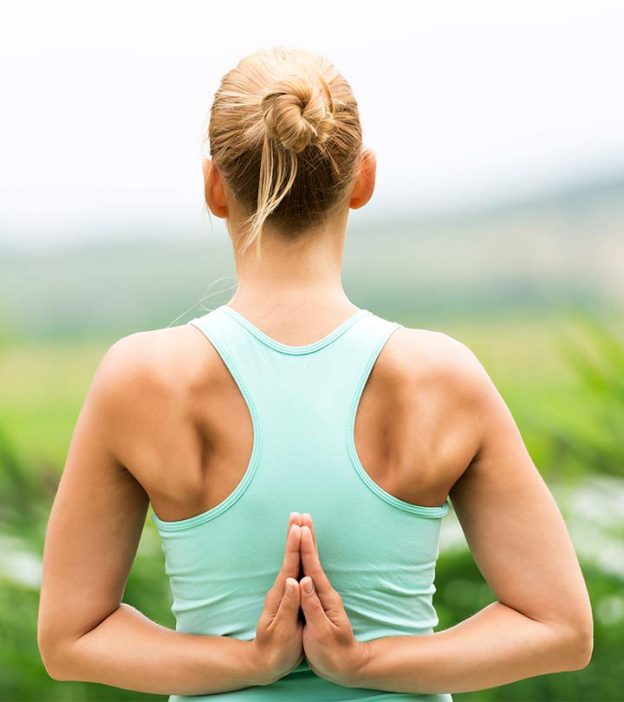Source
- Alexander Yanai Volume 4, Lesson 160
- Reel 11, Track 4, Lesson 3
Synopsis
- In this lesson, Dr. Feldenkrais describes a process that leads to two common Yoga postures, Reverse Prayer and asymmetric arms behind head (Pashchima Namakarasana, and Gomukhasana, respectively)
Lesson Outline
- In a series of carefully graded steps while (mostly) lying on the stomach, the student begins to be able to move the backs of the hands across the back (as in preparation for Gomukhasana).
- The the process of learning how the shoulder, neck, sternum need to be coordinated for reverse prayer — first by lying on the back and feeling a variety of “prayer” positions, then bringing the arms behind…
- The lesson ends with a more recognizable Gomukhasana. And the student is invited to stand and try it.
Cautions
- This lesson presumes that the student has fairly well-functioning shoulders, so that the required rotations do not produce pain.
- If a student encounters pain, stop immediately. No amount of repetition (or “pushing thru”) will result in gain — instead significant injury.
- If strain or pain, cautious approximations with a multitude of alternatives are needed.
Focus or key principles that made explicit in the teaching:
- using a systematic approach though difficult areas
- moving in directions at 90 degrees (orthogonal) to the intended direction
- using the weight of the body to allow bones and joints to realign (rather than effort)
- using positions (e.g. on stomach) and positions of hands that were accessible, initially
Related ATMs
- AY 121: Extending the arms and twisting to the back.
- See Also Theme Yoga
- See also Theme Shoulders
back of the hand on the back, spread:
- AY285: Interweaving the back with the help of the hands
- AY287 General continuation
- AY376 Clocks in three positions
- AY384 Holding hand in hand on the back
- AY391 Tying the upper arms
- AY476 Lengthening heels and arms
- MM03 Exploring the Floor: The Movements of the Shoulder
Resources
Share Your Insights (ideas, principles, strategies, experiences, …)
- I find this lesson is much more focussed towards completion of a posture than many others, and, as a consequence, is less satisfying. I also sensed much less preparation than other lessons. In some lessons, Dr. Feldenkrais often has preliminary movements that are later used in complex ways. This lesson could benefit from this approach, but he did not. One part that stood out in this manner was that his directions for the palms together in front (step 7) are vague and when he returns to a similar orientation (Step 12), he is more explicit (“hands as in clapping”). Further supporting this is that he says, “Everyone feels that the hands could slide if the back were more flexible…” (comment just before step 11) and then he proposes several movements that help the student extend further in several parts of the back. My own contention is that this have been included effectively at the beginning of the lesson.
- – rblack Nov 26, 2017 Rob Black
- Differing viewpoints are welcome and desired!
Disclaimer: This site is for sharing information about Feldenkrais® Awareness Through Movement® lessons. The information included on this site is for educational purposes only. Nothing on Feldy Notebook should be construed as an attempt to offer medical advice or treatment.
All contributions to this website are licensed under the Creative Commons Attribution Share-Alike 3.0 License. Do not add any copyrighted information to this website. Feldy Notebook is sponsored by Kinetic Inquiry.
